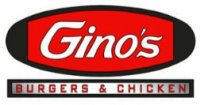When you talk about philanthropic restaurant chains, you cannot forget the name of Gino’s Hamburgers. The chain started in 1957 with the first location at 4009 North Point Road in Dundalk, Maryland. However, the restaurant chain went defunct in 1982. So what happened to Gino’s Hamburgers? Let us take a peek into the tale of this classic restaurant chain from the past!
Who Started The Restaurant?
Football players Alan Ameche and Joe Campanella, with Louis Fischer, from the Baltimore Colts, opened a hamburger restaurant right outside Baltimore.
The first location opened at 4009 North Point Road in Dundalk, Maryland, in 1957. The trio partnered with the captain of the Colts, Gino Marchetti, in 1959.
As time passed by, the chain had more owners. Have a look at the history of this restaurant chain below.
The Tale of Gino’s Hamburgers
Although the first location opened in 1957, the restaurant got its name of Gino’s in 1959 for the first time. It was when Gino Marchetti agreed to partner with the trio. Within a year, the company expanded to North Carolina in the South and New England in the East.
In 1967, they also partnered with Tops Drive Inn, a famous drive-in chain of restaurants. Hence, the chain got famous as Gino’s Drive-In. Here, Gino’s became one of the first drive-in restaurant chains.
In the early 1970s, the company expanded from its Mid-Atlantic base into the Midwest. However, the locations could not operate for long. For one spot, the company purchased Orchestra Hall in Detroit. They planned to demolish the structure for the construction of Gino’s other restaurant location. When the plan became public, people led a grass-roots campaign to save the place.
Soon, the chain went to Massachusetts and Connecticut. There it had difficulties in surviving: Gino Marchetti was relatively unknown in the region. Additionally, people confused them with their ever-famous Papa Gino’s pizza chain. Hence, these locations closed eventually. Today, many of the spots now house other chains like Burger King.
The chain did not franchise. Instead, each store was company-owned and operated. It was famous for its philanthropic efforts, aimed at helping young people. Executives of the company supported many educational, cultural, recreational, and athletic projects.
By 1969, there were 100 restaurant locations, growing to 330 in 1972. In 1978 there were 359 stores.
The chain had 359 company-owned locations when the Marriott Corporation acquired it in 1982. Marriott discontinued the brand, converting its several franchises to its Roy Rogers Restaurants chain. The last location, located in Pasadena, Maryland, closed in 1986. Marriot did not own it.
Gino also bought and operated the Rustler Steak House chain. Marriot sold it right after the purchase of Gino Hamburgers. The Sirloin-er, from sirloin steak (a Tops Drive-Inn staple), the Jumbo Gino, similar to the Whopper, and the Gino Giant, which competed with the Big Mac, were all famous at the restaurant. The company was the Mid-Atlantic franchisee for Kentucky Fried Chicken.
Famous Food Items
Gino Hamburgers featured sandwich was the Gino Giant-dubbed, A Banquet on a Bun. In the early 1970s, the chain also adopted a line of Sirloiner burgers. In 1976, Gino retired the Giant sandwich and replaced it with the Gino Hero. The Hero turned out to be unsuccessful and led Gino to return the Giant. Prizefighter Muhammad Ali filmed a TV commercial to announce the return of Giant Burger. In 1978, they added salad combo platters. With Salad Bars, they also added Drive-through windows at some locations.
In 1978, they added the unsuccessful Gino Hero sandwich back to the menu. Critics think that the Hero was one of the reasons for its downfall. Around 1980, Cheesesteak sandwiches became available along with a line of breakfasts. Around 1981, the chain management made the unfortunate decision to discontinue the trademark Giant, Sirloiner, and hamburger/cheeseburger. They replaced them with an all-new menu that included Homestyle Hamburgers, Roast Beef, Chili, and Junior Burgers. Along with the new menu, the board introduced interiors and exteriors. Realizing the mistake of discontinuing the famous Giant, the chain reinstated the sandwich in 1983.
A Comeback as Gino’s Burgers and Chicken
After going defunct in 1982 and the last chain ending in 1986, the chain came back in 2010. However, the brand name is Gino’s Burger and Chicken. The first location opened in King of Prussia, Pennsylvania. It was the same town as the original headquarters. By Spring 2011, there were plans for franchise expansion into Baltimore. On August 17, 2011, a second Gino’s location opened in Towson, Maryland. Another Gino’s opened in Bensalem, Pennsylvania, on October 11, 2011.
One opened at Oriole Park at Camden Yards in 2012. However, it closed by the end of the 2014 season.
A location also opened in Aberdeen, Maryland. But the Bensalem location closed around the same time. Later on, the King of Prussia location closed.
Soon, all locations closed, leaving only the Towson and Glen Burnie locations as of today.
The Bottomline
Like all things, even big restaurant chains can have a downfall. The tale of Gino’s Hamburgers is no different. It started with two football players joining hands and operated more than 300 locations at its peak. However, the chain couldn’t keep up with its competitors. They also went down because of menu changes, as many critics believe. Today, there are no branches under the brand name of Gino’s Hamburgers. Many locations house other chains like Burger King. The owners did attempt to make a comeback with a different brand name. The attempts remained unsuccessful, with only two current spots surviving.
Have a look at more classic restaurants from the past that no longer exist or barely survive: Horn & Hardart, All-Star Cafe, and the Bennigans.
Speaking of restaurants going defunct, make sure you enjoy the best restaurants near you till they exist.

